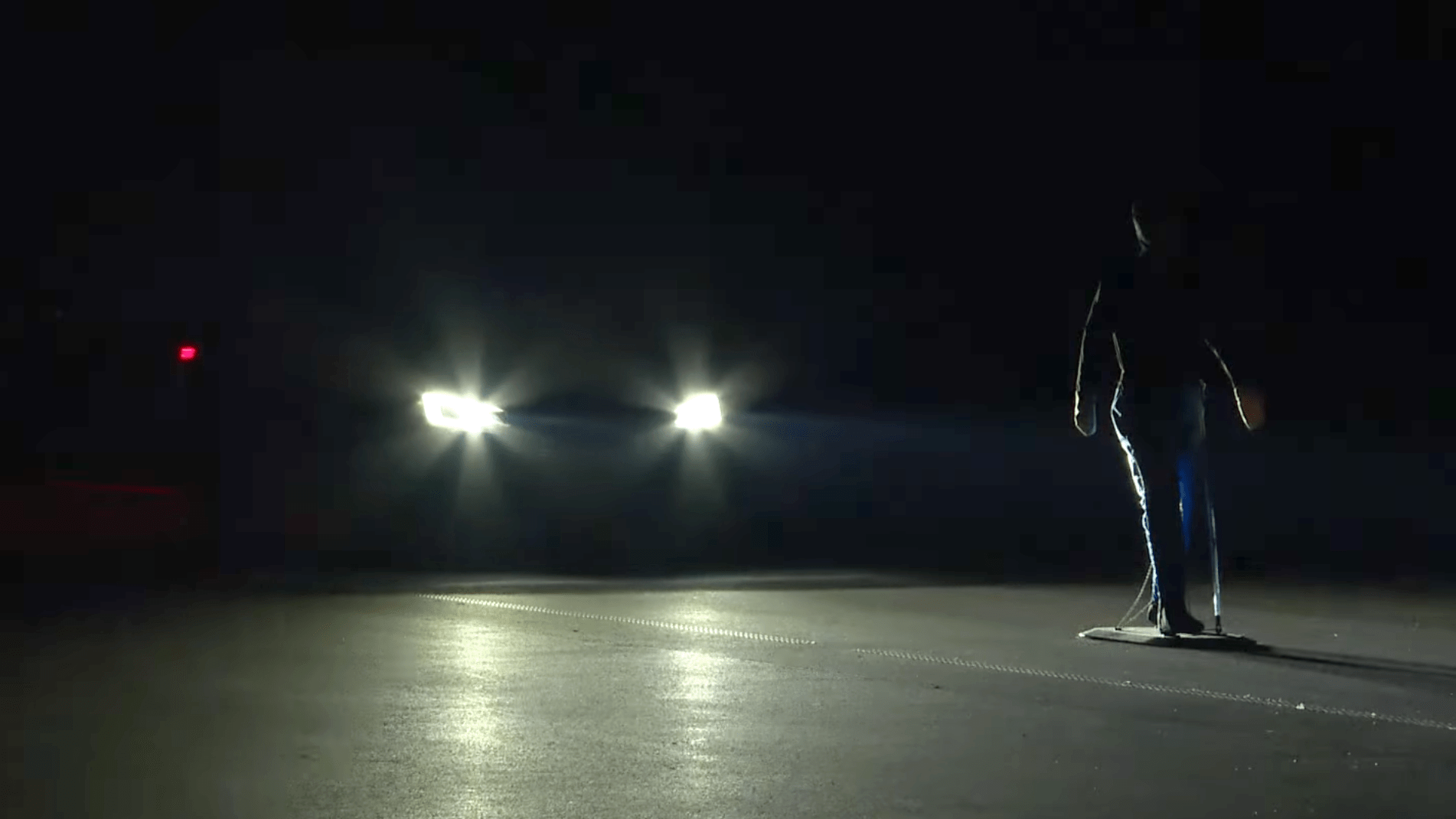

One of the ways automakers are addressing the surging numbers of pedestrian fatalities is with pedestrian automatic emergency braking (AEB) systems that are designed to detect anyone in your car’s path and stop your car before hitting them. The problem is, three-quarters of these deaths happen at night, and the latest Insurance Institute for Highway Safety test results paint a bleak picture of pedestrian AEB systems’ ability to function in low light.
More than half of the 23 2022-model-year midsize cars, midsize SUVs and small pickups earned only a “basic” or “no credit” score in the IIHS’s nighttime pedestrian AEB test, which tested a car’s ability to avoid hitting both adult-sized pedestrians along the side of the road as well as adult-sized pedestrians crossing in front of a car. A child-sized mannequin wasn’t part of the test as fewer children die in nighttime pedestrian crashes. Of that same field of 23 cars tested, 19 of those cars had earned “superior” (highest) or “advanced” (next-to-highest) ratings for AEB performance in the daytime, which the IIHS has been testing since 2019.

The crossing test was performed at 12 mph and 25 mph, and the side-of-the-road test was performed at 25 mph and 37 mph, and all tests were performed on dry pavement. Separate trials were done using high and low beams as well.
Only one vehicle in the nighttime test avoided these unlucky mannequins in every test: the Nissan Pathfinder. The Pathfinder, Ford Mustang Mach-E, Toyota Camry and Toyota Highlander were the only four to score a superior rating for their pedestrian AEB systems at night.
On the opposite end of the spectrum, the Honda Pilot, Chevrolet Malibu, Nissan Altima and Toyota Tacoma crew cab all got no credit for their pedestrian auto-braking abilities at night. These vehicles either didn’t slow at all or slowed down by a negligible amount before striking the pedestrian dummy in the tests.
IIHS officials were especially concerned with the number of SUVs and trucks that fared poorly in the test given the large blind spots that often come with these taller vehicles and their tendency to cause greater harm to pedestrians. All of the vehicles that scored only a “basic” rating in the test were SUVs and pickups: the Chevrolet Traverse, Ford Explorer, Ford Maverick, Ford Ranger, Mazda CX-9, Volkswagen Atlas, Volkswagen Atlas Cross Sport and Volkswagen Tiguan.
”It’s discouraging that so many midsize SUVs and small pickups perform poorly in the nighttime test because research suggests these types of vehicles are more dangerous to pedestrians,” IIHS President David Harkey said, pointing to the agency’s prior research on late-model SUV design.
Pedestrian deaths have soared in recent years, increasing nearly 80% since 2009 and accounting for approximately a fifth of all traffic fatalities in 2021, the IIHS notes. Pedestrian AEB systems help, as the IIHS notes that equipped vehicles have roughly 25% fewer pedestrian crashes overall than non-equipped vehicles. Yet, they also showed no difference in the number of pedestrian crashes between AEB-equipped cars and non-AEB-equipped cars on unlit roads, and this latest nighttime test demonstrates why.
“Eight of the 12 vehicles that earn a basic rating or no credit in the nighttime test got superior or advanced ratings in the daylight evaluation,” said IIHS VP of Active Safety David Aylor, who designed the test.
Harkey isn’t completely disheartened by the study’s findings, though, noting vehicles like the Pathfinder and Mustang Mach-E as proof that automakers can figure pedestrian AEB systems out. In the meantime, we should all keep in mind that these systems are a safety net meant to act as a backup for our driving skills—not reasons to pay less attention behind the wheel.
You can read the IIHS’s full report here.
Got a tip? Email the author: stef@thedrive.com